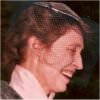 | Name: Beryl Smith
Overview: Beryl Smith first met children with diabetes when she was a student nurse and junior staff nurse at Birmingham Children`s Hospital from 1953 to 1957. She gave up nursing after she got married and didn`t encounter diabetes again until her own daughter, Catherine, was diagnosed in 1964, at the age of five. Catherine had so-called ‘brittle` diabetes, with frequent hypos – until she received two islet transplants in 2006/7. Beryl`s husband, David, developed Type 2 diabetes in 1983. At first he was on tablets, but was able to manage on diet alone after he lost four and a half stone.
Hits=1 |
|
|  | Name: Philip Farrant
Overview: Dr. Philip Farrant was a general physician at West Hill Hospital in Dartford from 1963 to 1988. He was never officially designated as having a ‘special interest in diabetes`, but he ran the diabetic clinics and published on diabetes. In 1976, he encouraged a patient to found a local branch of the British Diabetic Association, which raised money for equipment and offered support to patients. In 1972, he established a postgraduate medical centre at Joyce Green Hospital, which moved to the new Darent Valley Hospital in 2000 and was re-named the Philip Farrant Education Centre.
Hits=1 |
|
| 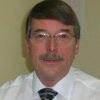 | Name: Richard Gee
Overview: Richard Gee has been a G.P. in Lower Gornal, on the edge of the Black Country, since 1972. During the 1980s, a diabetes consultant from Wordsley Hospital helped his practice, and other training practices in the area, to set up mini-clinics and make links with a Diabetes Resource Centre at the hospital. In Dr. Gee`s view, the Payment by Results system, introduced in 2004, encouraged hospitals to reverse the flow of patients from hospital to GP care - but in his area many patients have preferred to stay with their` GPs, supported by a strong diabetes community nursing team.
There is interview with another Black Country GP, from one generation earlier, Dr. Joe Needoff.
Hits=1 |
|
|  | Name: Clive B
Overview: Clive`s wife, Joan, was diagnosed with diabetes when she was four years old, in 1945. They married when she was nearly 21 in 1962 and had one son. Clive knew little about diabetes when they married but felt it was essential to learn, because when Joan had a hypo, she needed his help to recover. He has always been on the look-out for warning signs and has also supported her through miscarriages and depression. He thinks that coping with diabetes has strengthened their marriage. Had he known what he was taking on, `I`d still do the same thing again tomorrow`.
There is also an interview with Clive`s wife, Joan B.
Hits=1 |
|
|
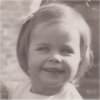 | Name: Joan B
Overview: Joan began to lose weight when she was three. Her doctor had never seen a child with diabetes and so failed to act until she was critically ill. When she recovered, she had to weigh every slice of bread, but was allowed extra wartime rations of cheese, meat and fish. She has been married to Clive since 1962 and has one son. She would like to have worked as a children`s nurse, but was advised that she wasn`t fit enough, and she was would like to have had more children, but had three miscarriages, which she attributes to diabetes.
There is also an interview with Joan`s husband, Clive.
Hits=1 |
|
| 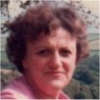 | Name: June Hill
Overview: June Hill had never eaten much sweet food and had always had plenty of exercise so her diagnosis brought little change and had no effect on her career as a teacher and then a nurse. She went on tablets in 1983, and was put on insulin in 1995, when she had a serious illness unconnected with diabetes. She took no interest in her own diabetes for many years until her diabetic mother became housebound. Then she began to inform herself about long-term implications. She is very fit and is enjoying her retirement.
There is also an interview with June Hill`s husband, Tony Hill
Hits=1 |
|
|
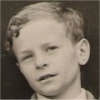 | Name: Philip
Overview: Philip was diagnosed aged 9 and considers that it`s better to get diabetes young, when the body is more adaptable. He attended a grammar school, and regrets that he often used diabetes as an excuse to miss school. He left at 16, but acquired more qualifications later and became a successful accountant. His diabetes was well controlled and caused little trouble for most of his life, until he began to get early morning hypos a few years ago. (He finds the term `hypo` unhelpful, since it`s used to refer to anything from a mild sensation to complete unconsciousness.)
Hits=1 |
|
| 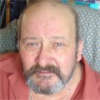 | Name: Victor Warman
Overview: Victor Warman`s father had been a Sick Birth Attendant in the Navy during the Second World War, and was very protective of his son after his diagnosis, advising him to avoid competitive sport. Victor left school at 15, spent much of his life as a machine-fitter, and ended up teaching Design Technology. His glucose levels go `up and down like a yoyo` and he now advocates plenty of exercise: `don`t do as I do, do as I say`. He has had several complications, but feels that diabetes is `not the be-all and the end-all of your life`.
Hits=1 |
|
|
 | Name: John Browning
Overview: John Browning`s father was an army officer and John always assumed that he would make his own career in the forces. He was diagnosed with diabetes at the age of 28, not long after getting married, and was invalided out of the army. He became a Conservative party agent and then a teacher. He still weighs his food and attributes his good health to his strict regime. He thinks one of the main improvements in his care has been to see the same specialist at each visit, instead of a different person every time.
Hits=1 |
|
|
| Search returned 9 matches |